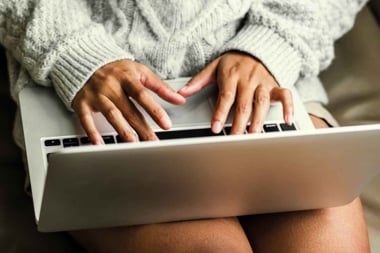Caffeine Fix
One of my favourite high school hangouts was the doughnut shop, where my friends would drink coffee, refill after refill. In those days, I didn't like the taste, so I became the group's 'tea dork.'
One of my favourite high school hangouts was the doughnut shop, where my friends would drink coffee, refill after refill. In those days, I didn't like the taste, so I became the group's "tea dork."
However, now a cup of coffee is as much a part of my morning routine as whacking the snooze button.
Caffeinated drinks are more popular than ever with teens. Joining the classic cup of joe are a myriad of caffeinated beverages: soft drinks, iced coffees, and so-called "energy" drinks.
The Buzz-Kill
There are definite risks associated with caffeine consumption. What else are you getting with your afternoon pick-me-up?
- Caffeine is a diuretic, so it makes you urinate more and can lead to dehydration. When it leaves your body, caffeine takes good things with it, like calcium and other minerals, which could set you up for bone loss later in life.
- Caffeine can have both cumulative properties, meaning the more you consume regularly, the more you need to feel its effects; and rebound properties, meaning that your energy burst is short-lived and can leave you more tired than ever. Moreover, caffeine intake can interfere with your rest.
- Most packaged caffeine products contain loads of sugar, are full of calories, and offer little nutrition. As a result, they can contribute to cavities and increase risk for
obesity and type 2 diabetes.
It's Everywhere!
Caffeine can be a tricky thing to find. Most coffee drinks vary in the amounts of caffeine they contain. Chocolate, tea (even some herbal teas), and many over-the-counter pain relievers also contain caffeine. The sneakiest source of caffeine is in energy drinks. These often contain guarana, a bean from South America that has two to three times the caffeine in coffee. Many of these drinks then add more caffeine to the mix making them the equivalent of six to ten cups of coffee.
Getting Off the Juice
A bit of caffeine is not the end of the world. But if you're concerned about how much you're consuming, you might ask yourself why you drink it. Do you need energy, or have difficulty concentrating? Do you need more and more caffeine to feel its effects?
Maybe you need more rest. Try going to bed half an hour earlier for a week, and see if that solves the problem. Perhaps you're dehydrated, which can result in feeling sluggish or listless. Before reaching for that energy drink in the afternoon, try downing a couple of glasses of water.
If you're a hardcore java junkie, going cold turkey may cause withdrawal symptoms like headaches, irritability, and feeling achy and gross. Try tapering off by drinking smaller servings, or switching to half-caf drinks. Other options are:
- Noncaffeinated herbal teas. Health food stores have really tasty ones, honest!
- Water! Sound boring? Try sparkling water topped with a splash of pure fruit juice.
- Flavoured soy milk.
- Natural, fruit-juice sweetened sodas, like ginger beer.
Say goodbye to the jitters and coffee breath. Your body and your friends will thank you!




